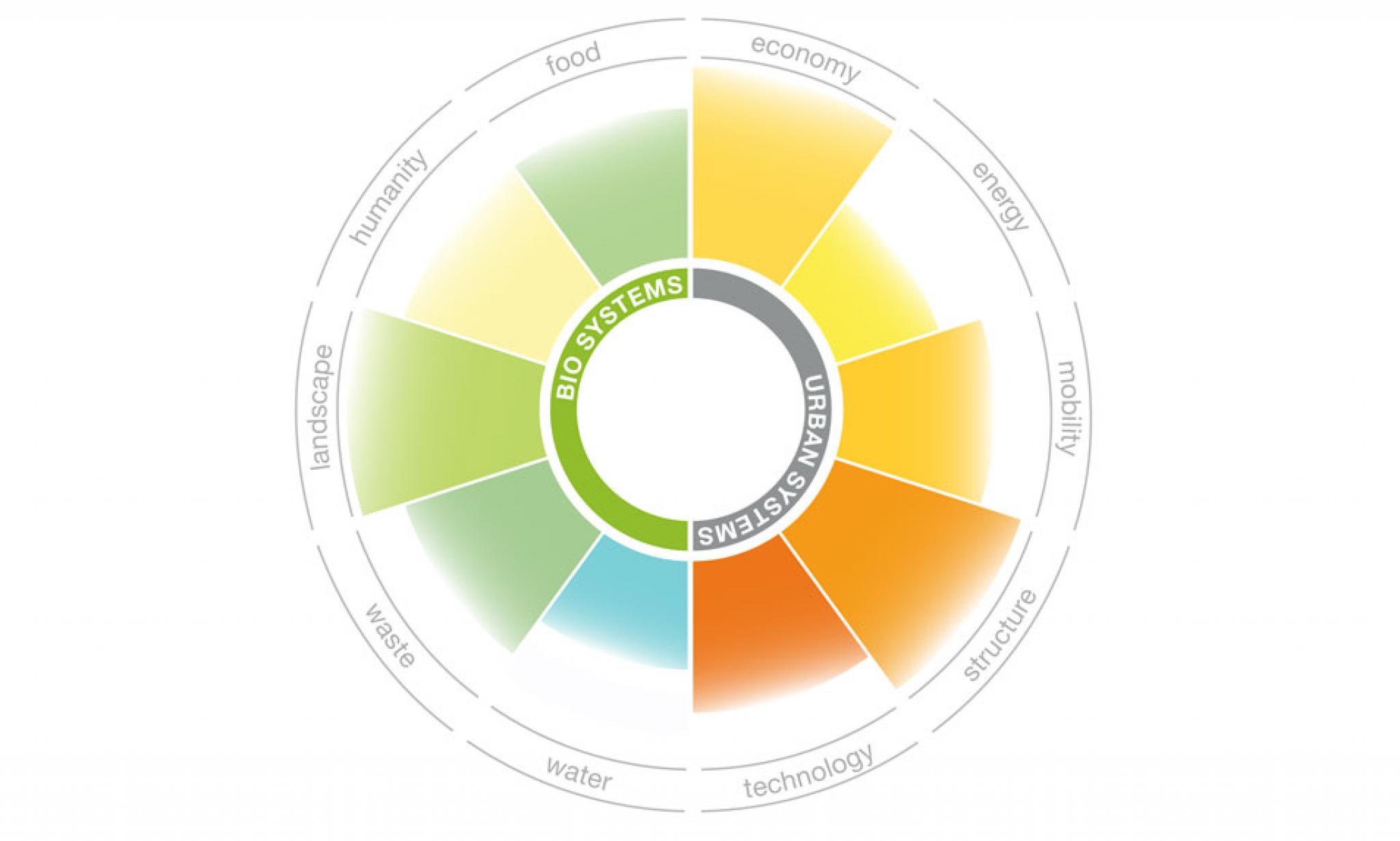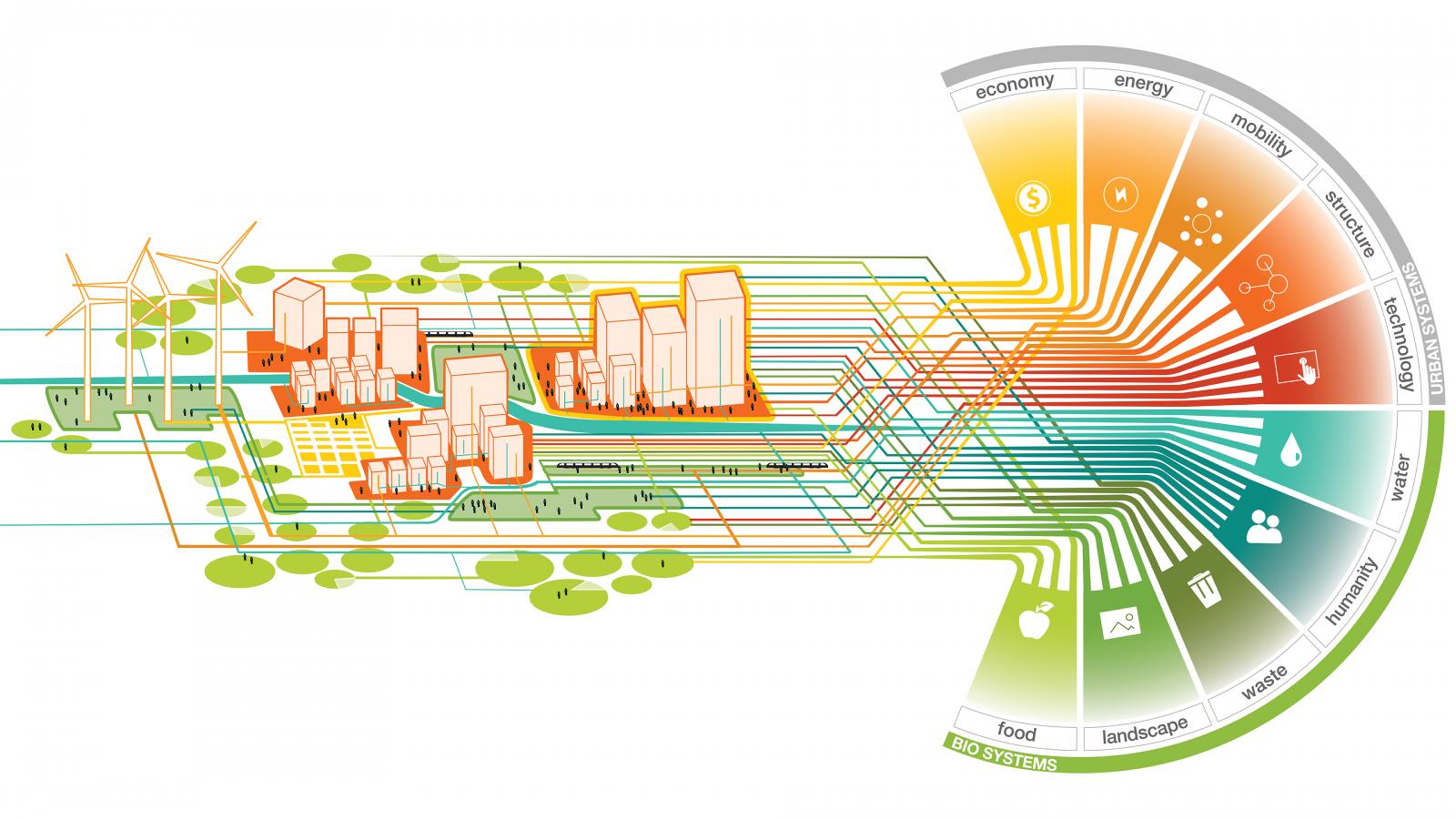Biourbanism is a combination of ten primary systems. These systems are made up of key indicators that can be aggregated as a scorecard for determining the relative health and competitiveness of a region, city or project depending on the scale of investigation. Optimum urban health is achieved if intervention to an individual system does not trigger significant detrimental impact to the remaining nine. The interrelationships of systems are thus managed in a purposeful and mutually beneficial way. A description of the systems follows below:


